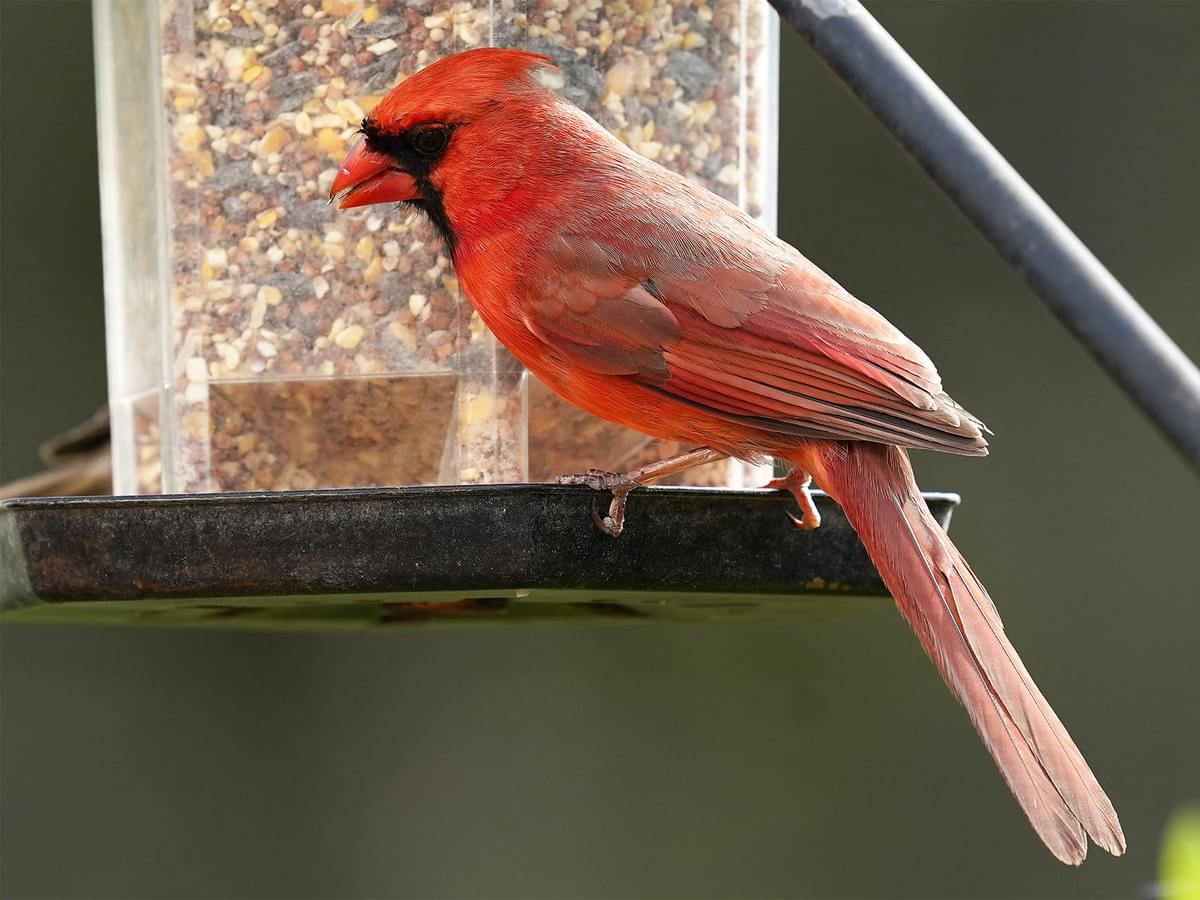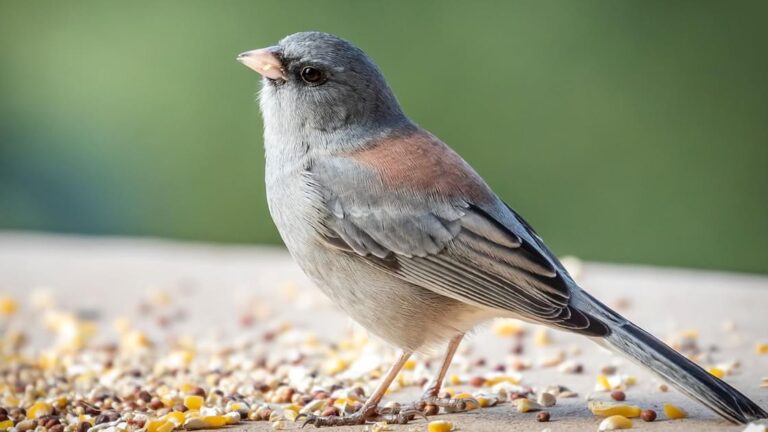Simply described, cracked corn is dried corn kernels that have been crushed or split into tiny bits. It is a common ingredient in commercial bird seed mixtures. Typically manufactured from maize, cracked corn is a common element in feed intended for both domestic and wild birds.
What is corn cracked?
As the name implies, cracked corn consists of dried corn kernels that have been broken into tiny pieces to facilitate better digestion for birds.
With little waste left behind, whole corn kernels are dried and then broken into tiny bits using grinding technology. The coarser fragments are perfect for small backyard birds to eat.
Cracked corn’s nutritional advantages for birds
Both domestic and wild chickens may benefit nutritionally from eating corn. It is a good source of energy because it contains a lot of carbohydrates—roughly 62 percent of the whole kernel. The remaining components are oil (4 percent), water (15 percent), and protein and fiber (19 percent).
You can feed cracked corn to backyard birds all year long, but it’s especially appreciated in the winter months when it’s a cheap, high-energy food source.
Avian Enthusiasts for Cracked Corn
Cracked corn is a favorite diet of many poultry and birds, including chickens, turkeys, geese, quail, grouse, and ducks. It is also a very nutritious and reasonably priced feed option.
American Goldfinches, Northern Cardinals, and Blue Jays are common backyard birds that are known to love cracked corn. They will happily fill feeders filled with crushed corn kernels. When cracked corn is placed directly on the ground, birds such as mourning doves, dark-eyed Juncos, and house sparrows will search for the tiny pieces in addition to other available seeds and grains.
A Cardinal from the North. Birds that are common in backyards and are known to eat cracked corn would gladly fill feeders with ground corn kernels.
The Greatest Ways to Serve Popcorn
It’s best to just sprinkle the corn straight into short grass or onto sections of patio or decking, since many ground-feeding birds like cracked corn. To attract ground-feeding species like quail and towhees that prefer to feed under cover, scatter cracked corn under shrubs and other low-lying vegetation.
The best feeder types for cracked corn are usually tray or platform feeders, which let birds peck at individual bits.
Cracked corn may be fed on its own or combined with other kinds of seed. It’s a good idea to minimize the amount of cracked corn in seed mixtures so that birds don’t just ignore it in favor of other seeds.
Freshness and Storage
When maintained free from moisture and pests, cracked corn may be stored for extended periods of time due to its dry nature, which reduces the likelihood of spoilage. It is advised to store items in airtight, waterproof, and sealed containers. To keep moisture and bugs out, they should be maintained at least 6 inches above the ground and 4 inches away from walls.
An Eastern Towhee – Ground-feeding species that like eating under cover will also be drawn to areas where cracked corn is scattered under shrubs and other low-lying vegetation.
Possible Issues and Safety Measures
While cracked corn is a frequent and well-liked feed option for both domestic and wild birds, it should only be provided occasionally and not as their primary food source.
Overfeeding birds cracked corn may result in obesity, which can then cause respiratory, digestive, and cardiac problems. While cracked corn is a good source of important carbohydrates, it is rather low in protein and fat, therefore other supplements are necessary to produce a well-balanced diet.
A typical issue is birdseed that has spilled, drawing rodents and mice to backyards. If you wish to steer clear of this problem, feeding cracked corn is advised since it is a comparatively waste-free option. As the kernels break into tiny bits, any particles that do fall to the ground won’t cause weeds to emerge.
It’s not always simple to see mold growing on stored stocks of cracked corn, which is a cause for worry. Providing birds with moldy corn has a number of health dangers, so you should proceed very carefully if you observe any discoloration or powdery development on your feed. Cracked corn has to be kept in dry conditions away from moisture to prevent mold or decay.
When Purchasing Cracked Corn: What to Consider
Regardless of whether it is farmed organically or not, cracked corn has a very comparable nutritional content. On the other hand, some individuals think that products obtained organically—that is, maize farmed without the use of pesticides, fertilizers, or genetically modified organisms—are better for the health of birds. While non-organic substitutes are more accessible and often less costly, certain synthetic pesticides could be utilized in the manufacturing process.
Cracked corn need to be marketed in sealed containers; biodegradable plastic is a more appropriate and useful choice, however more environmentally friendly paper or cardboard substitutes are also accessible.
Ducks, Geese, Quail, Grouse, Turkeys, and Chickens are some of the most well-known consumers of cracked corn.
The Effect on the Environment
One method to lessen the potential harm that feeding cracked corn to birds may cause the ecosystem is to choose corn that comes from sustainable farms. It’s a wonderful idea to start looking for suppliers that are GM-free and don’t use pesticides, fertilizers, or other chemicals in their cultivation or manufacturing. Brands that provide eco-friendly packaging are also a great option when it comes to this.
Not Just Birds: Cracked Corn Attracts Other Wildlife
Not only is cracked corn a favored food for wild birds, but it may also draw in deer, squirrels, chipmunks, and raccoons to your backyard. You can use cracked corn to draw these animals’ attention away from other feeders and feeding stations.
Do It Yourself: Producing Cracked Corn
After drying freshly harvested corn on the cob, making homemade cracked corn is rather simple. After the corn has dried, shell it and take the kernels from the cob. Then, use a coarse setting on a grinder to coarsely cut the kernels into small pieces. The same result may be obtained even without a grinder by putting the dry kernels in a plastic bag that is sealed and gently breaking them up with a hammer.
Crushed maize is a recognized favorite food of blue jays.
FAQs
Are Corn meal and cracked corn the same thing?
Although corn kernels are used to make both cracked corn and cornmeal, their characteristics and applications vary. While cracked corn is crushed into coarser particles with a rougher texture, cornmeal is ground into a fine powder with a consistency comparable to flour. While cracked corn is mostly used for animal or bird feed, cornmeal is mostly utilized in cooking.
Can I feed my birds with the broken corn that grocery shops sell?
To feed wild birds, you may use cracked corn from the grocery store, but make sure it is acceptable for animal feeding and doesn’t include any hazardous chemicals or preservatives.
What’s the difference between feeding birds with cracked and whole corn?
Whole corn and cracked corn are basically the same thing, however, cracked corn is naturally broken up into smaller pieces before being sold. Especially for tiny birds that could have trouble swallowing the whole hard kernel, birds may find it simpler to consume and digest the cracked type.
Final Thoughts
Cracked corn is a basic food that many birds will gladly consume, whether it’s provided by backyard feeders, poultry farms, or individuals rearing domestic chickens and turkeys. As part of a balanced and healthful diet, cracked corn is a safe and affordable alternative that will attract a variety of tiny and bigger birds. It is best served with other nutrient-dense grains, seeds, and nuts.






One thought on “Do Birds Like Cracked Corn?”